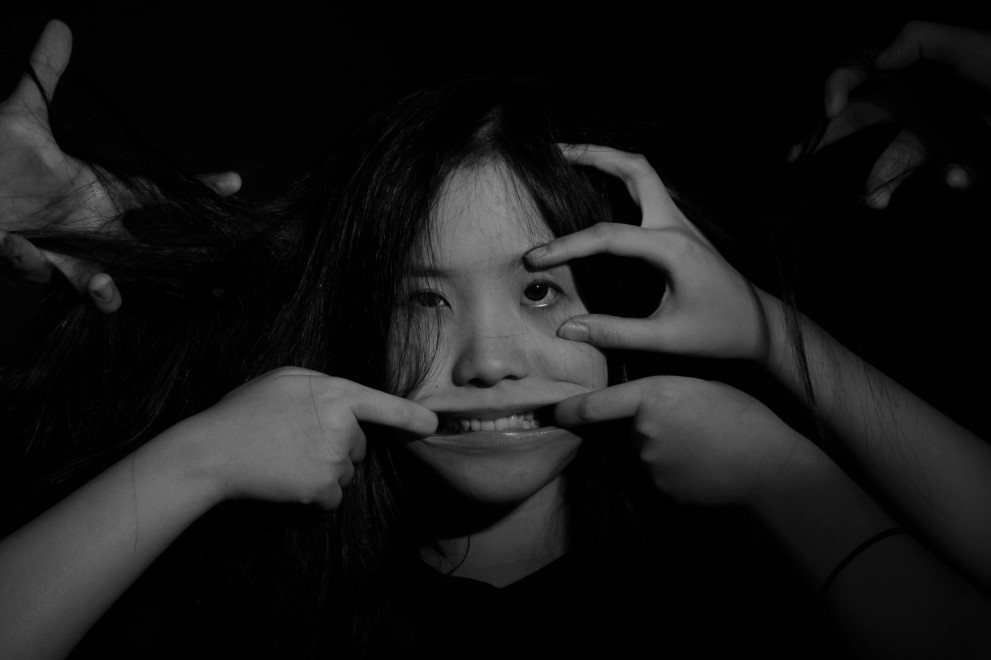Photo by Nicholas Kusuma on Unsplash
Over time, the youth’s view of their physical appearance affected how they looked at themselves with all the beauty standards in place.
Beauty standards on adolescents – is an important and timely topic that addresses the challenges and pressures they face in today’s society. Adolescence is a critical stage of development when young people form their identities, sense of self-worth, and societal beauty standards, which can significantly impact their mental and emotional well-being.
Teen rebels have the potential to challenge norms, amplify voices, and contribute to positive change in ways that can leave a lasting impact on society. We can empower them to become active creators of their narratives and agents of meaningful change by providing them with the necessary tools, resources, and platforms. That is what author Alfred Kurland actively advocates in the book The Soul of Adolescence Aligns with The Heart of Democracy. As a book on constructive critique of old paradigms about adolescence, Kurland urges the youth to reach their full potential.
The fact that beauty standards for adolescents have become more complex requires us to reflect on its other dangers. After all, young people become particular about their appearance, which they believe to determine their social standing. However, some factors play a role in it.
Factors That Influenced Beauty Standards on Adolescents

Photo by kevin laminto on Unsplash
Addressing the influence of beauty standards on adolescents requires a multi-faceted approach involving parents, educators, media creators, and society. Fostering open conversations, promoting diverse representations, and encouraging a well-rounded sense of self can help adolescents navigate these pressures and develop healthy relationships with their bodies and identities.
Media Influence
The media, including magazines, advertisements, social media, and entertainment, often perpetuates narrow and unrealistic beauty ideals. These standards can negatively affect adolescents’ self-esteem and body satisfaction. Analyzing how media portrays beauty and its impact on young minds is crucial to addressing body image issues.
Diversity and Representation
Promoting various body types, ethnicities, genders, abilities, and ages in media and advertising can help challenge conventional beauty standards. Highlighting real people and their stories can empower adolescents to embrace their uniqueness and appreciate diversity. Positive representation can lead to social change by influencing public opinion, promoting equality, and fostering a sense of belonging for all individuals.
Incorporating diversity and representation in beauty standards requires intentional efforts from media, advertisers, fashion brands, and society. We can create a more inclusive and accepting world by celebrating and embracing all types of beauty.
Education and Awareness
Incorporating body positivity and self-esteem education into school curricula can help adolescents develop a healthy relationship with their bodies. Teaching critical media literacy skills can also empower them to deconstruct and analyze the messages they receive from the media.
Role Models
Sharing stories of individuals who have challenged beauty norms and succeeded can inspire adolescents to embrace their authentic selves. Role models who promote body positivity and self-acceptance provide relatable examples of how to navigate societal pressures.
Social Media Impact On Self-Expression

Photo by Autumn Goodman on Unsplash
Social media platforms have become influential in shaping beauty standards for adolescents. Encouraging positive online interactions, promoting authentic self-expression, and discussing the potential pitfalls of social media can help adolescents healthily use these platforms. Despite the negatives, social media can also be a platform for body positivity and self-love movements. Users are increasingly sharing unfiltered and authentic images, challenging traditional beauty standards.
Parental and Peer Support
Parents, guardians, and peers play a significant role in shaping adolescents’ self-perception. Fostering open conversations, offering unconditional support, and practicing positive body language can promote a healthier body image. Moreover, it allows them to celebrate each individual’s uniqueness and encourage a more inclusive understanding of beauty.
Emphasize that beauty comes in all shapes, sizes, and colors. Highlight their unique qualities and strengths beyond physical appearance. Model a healthy relationship with your own body and appearance. Avoid negative self-talk or body shaming, and emphasize the importance of self-acceptance and self-care.
Mental Health Awareness
Young people should understand that seeking help from trusted adults or mental health professionals is a sign of strength, not weakness. By raising awareness about the impact of beauty standards on mental health and providing adolescents with the tools to navigate these pressures, we can empower them to develop a healthier self-concept, build resilience, and prioritize their mental well-being.
Establish a safe, non-judgmental space where adolescents feel comfortable expressing their thoughts and feelings. Let them know their feelings are valid and that you’re there to listen. Encourage adolescents to think critically about the media they consume. Ask questions like, “Do you think these images show real people?” or “How might these images affect how we see ourselves?”
Manner of Speaking
Be mindful of the language used to discuss bodies and appearances. Promoting positive and inclusive language can contribute to a more accepting culture. The goal is to empower adolescents to develop a healthy self-concept and a critical perspective on beauty standards. You can help them navigate these challenges more effectively by approaching the conversation with empathy and understanding.
Community Initiatives
Engage schools, community centers, and organizations in promoting body positivity workshops, events, and campaigns. Creating safe spaces for adolescents to share their thoughts and concerns can help combat the adverse effects of beauty standards. Various youth advocacies are in place that address issues in their lives, including the beauty standards of adolescents.
Remember that redefining beauty standards is an ongoing process that involves individuals, families, communities, and society. By addressing these issues, adolescents can be empowered to develop healthy relationships with their bodies and a strong sense of self-worth that goes beyond external appearances.


Recent Comments